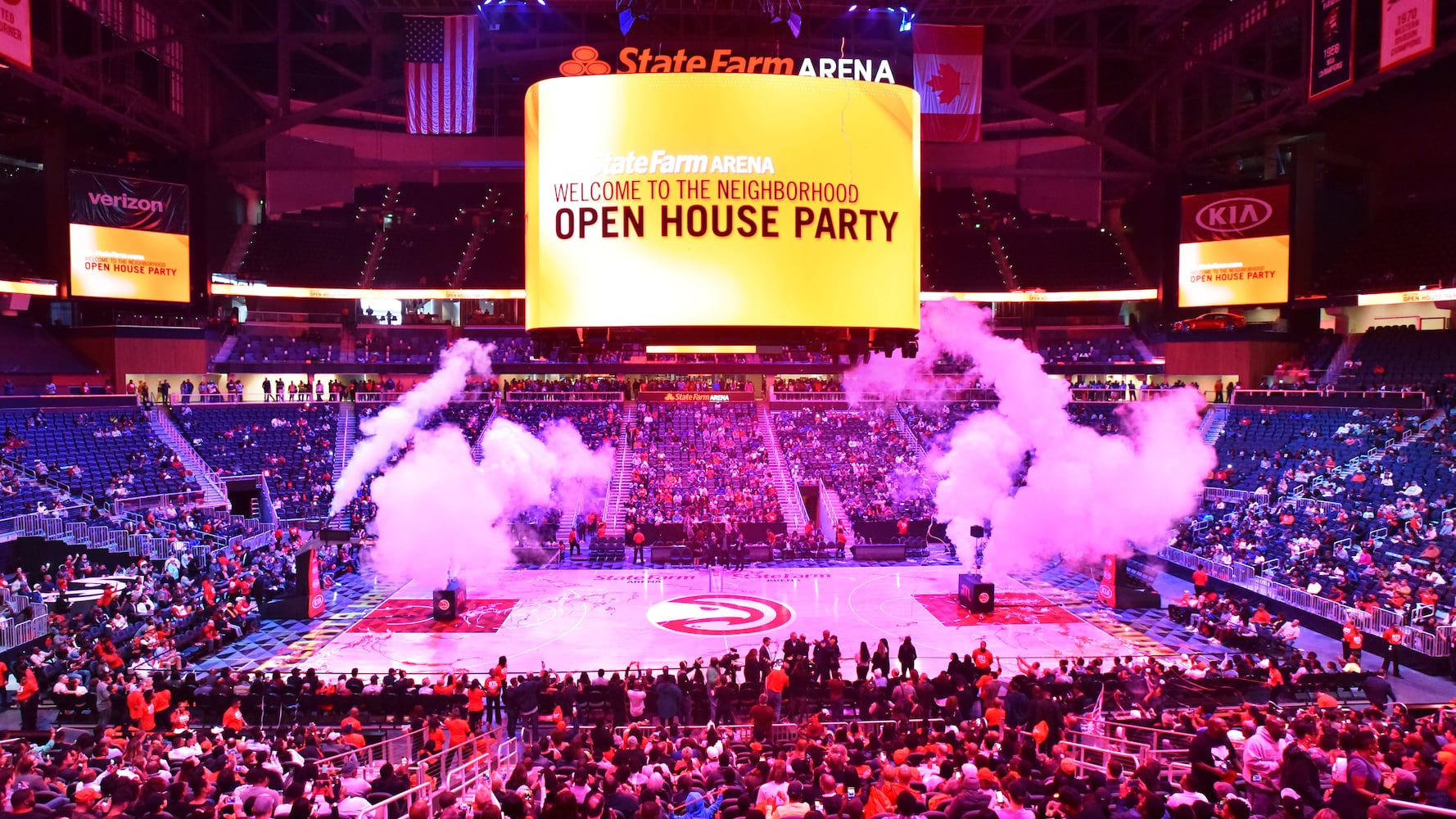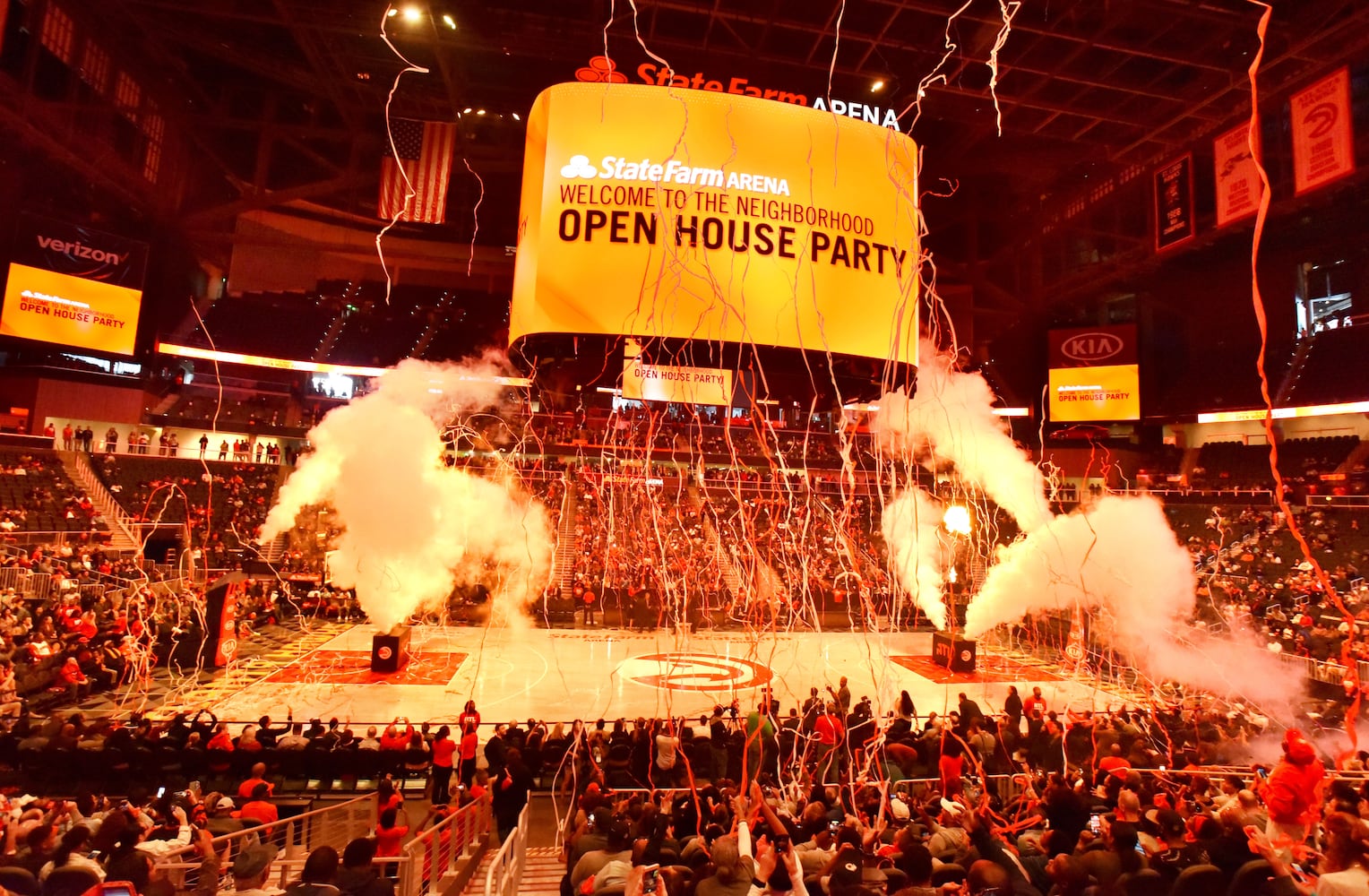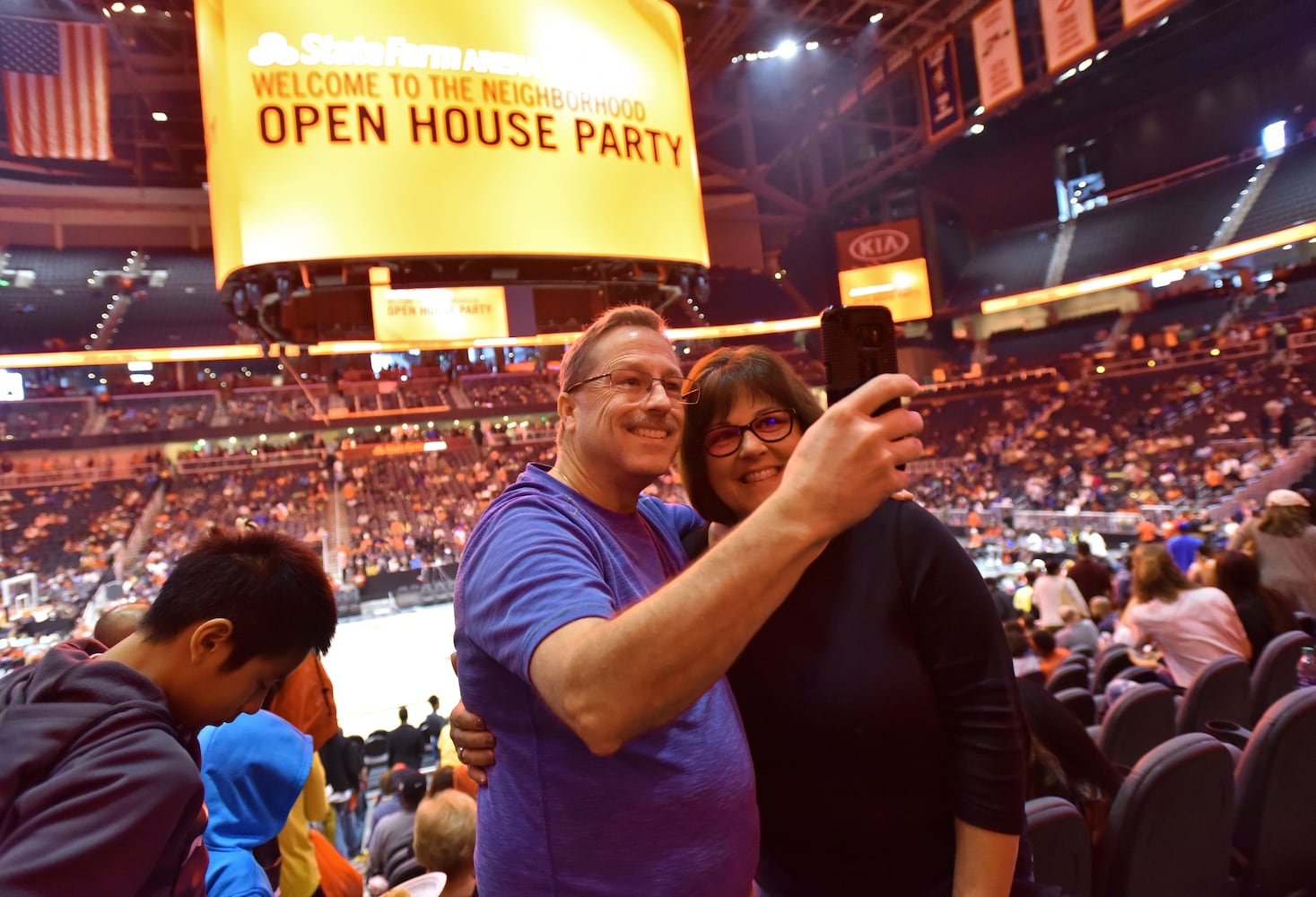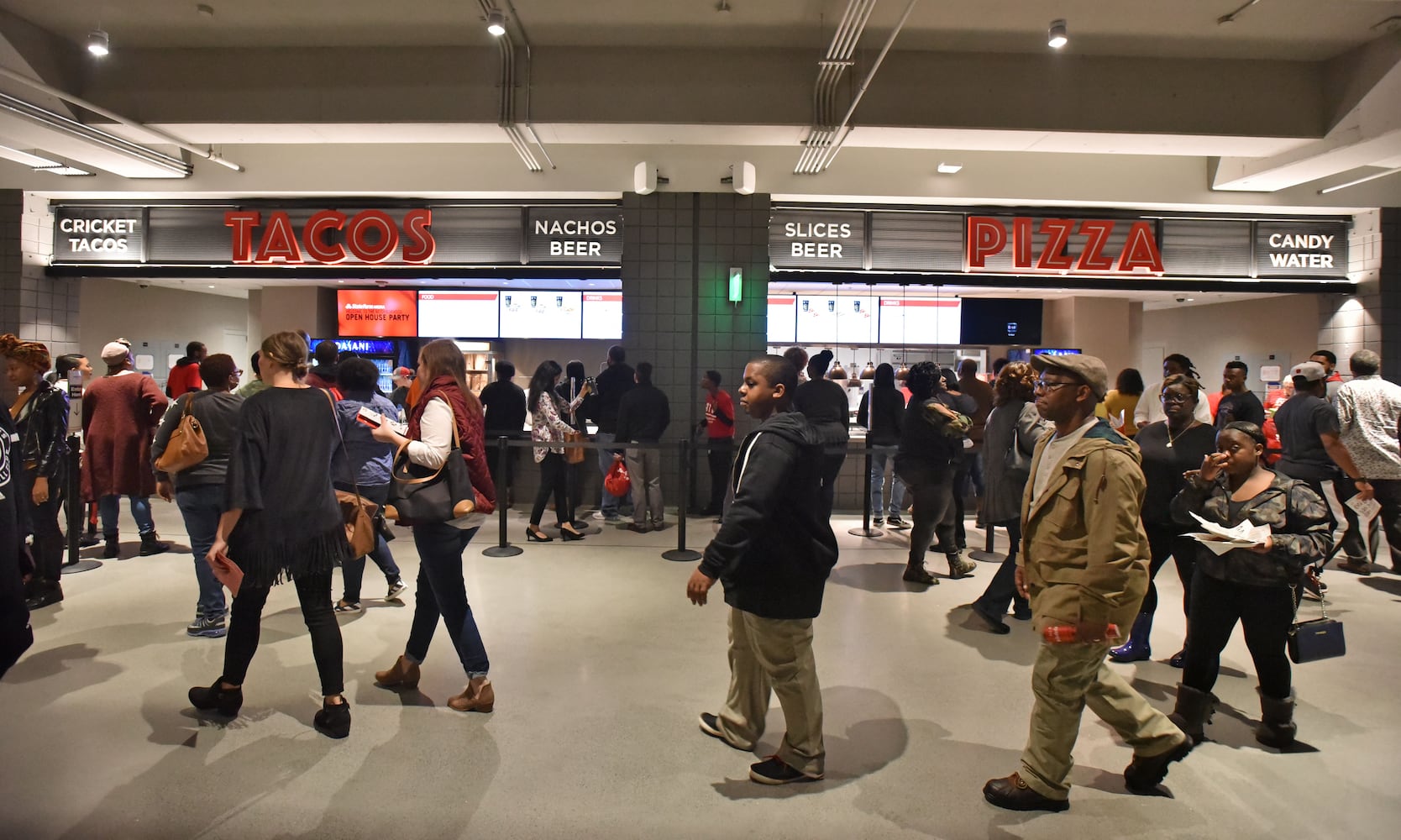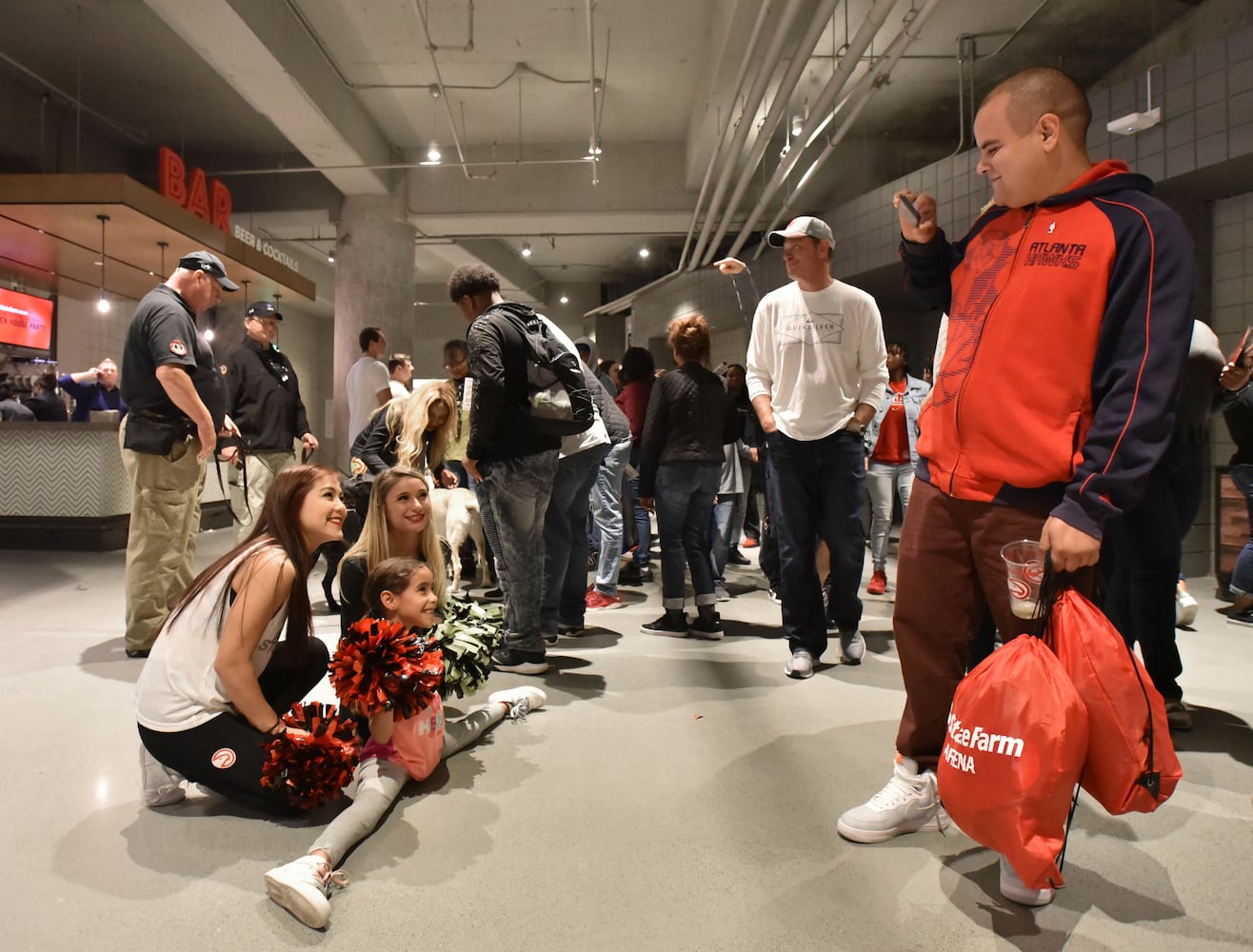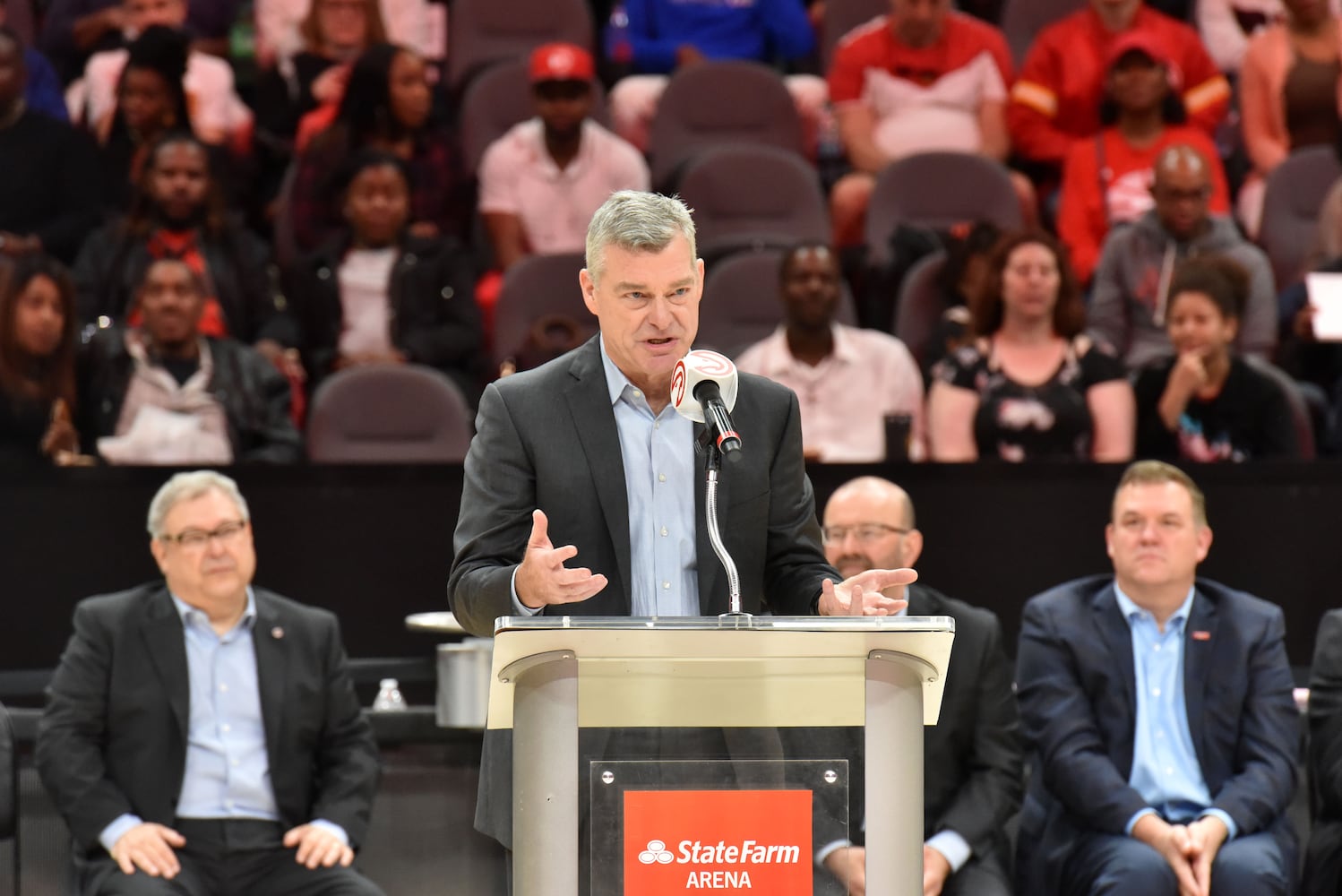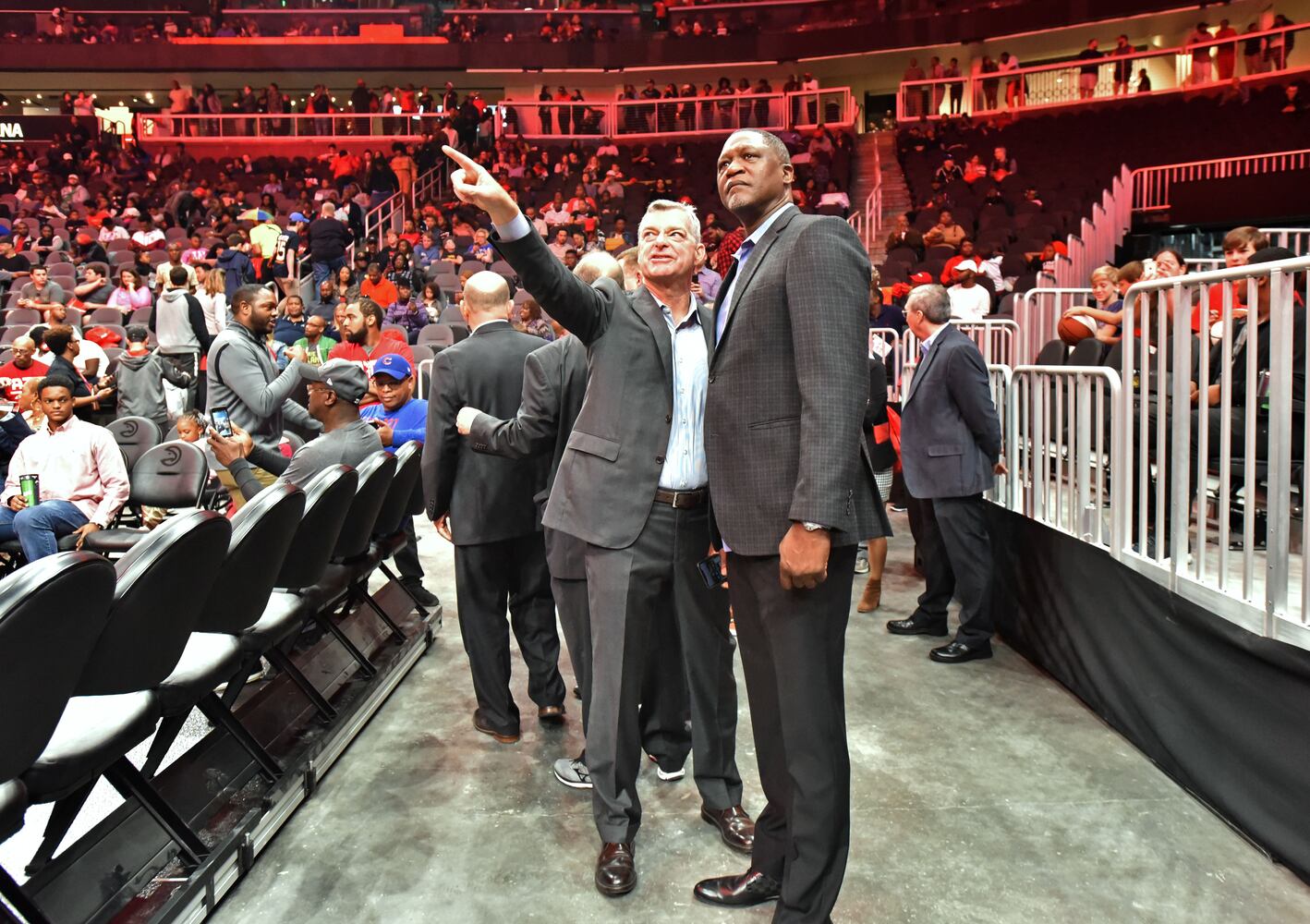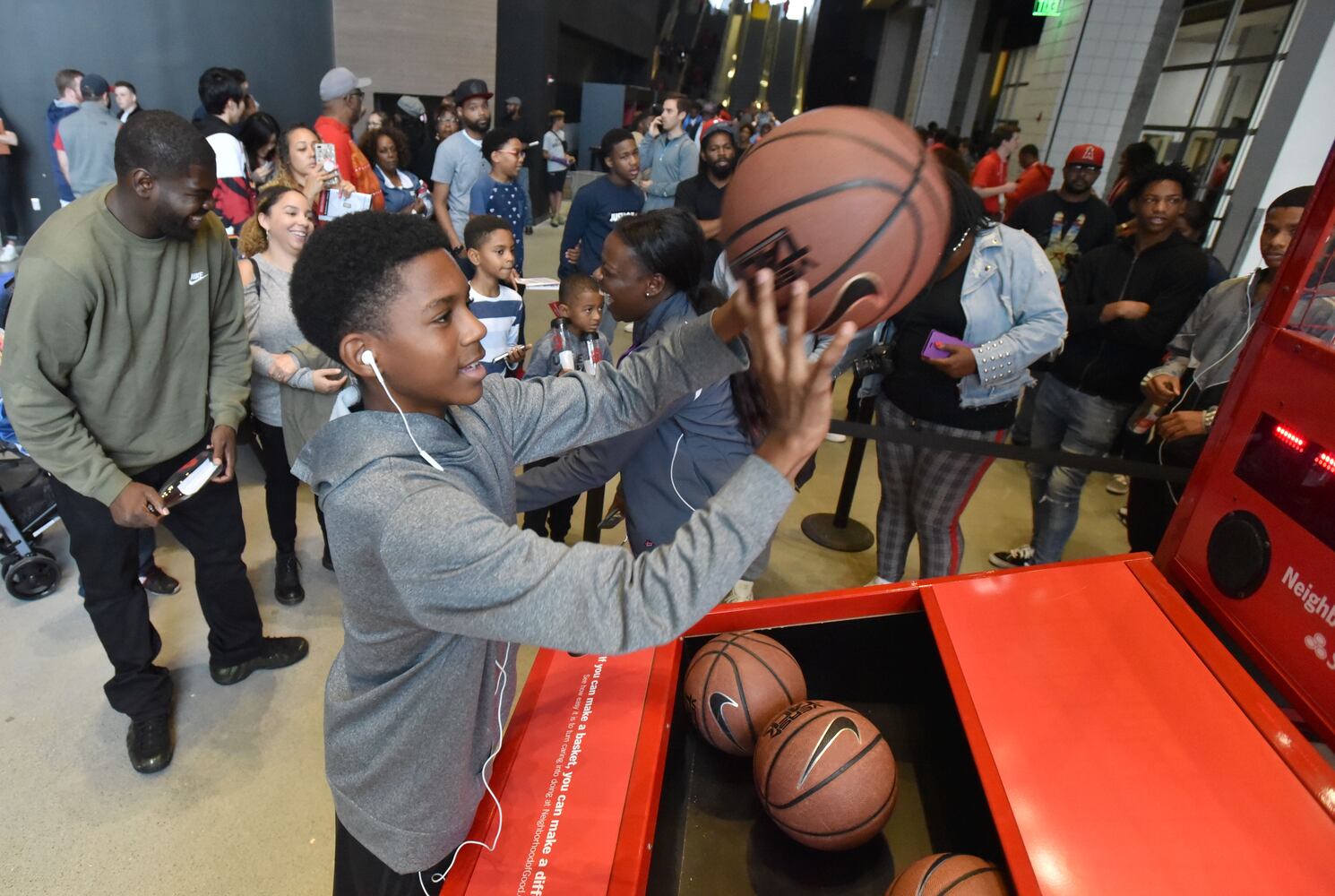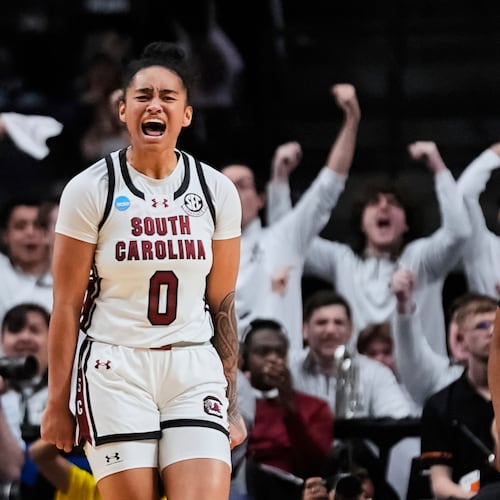From the outside, the Hawks’ arena looks the same as before, with the exception of new signage that conveys a new name.
“When you look at the outside of the building,” Hawks CEO Steve Koonin conceded, “you don’t really anticipate much having been done.”
But a lot has been done -- about $200 million worth, in fact -- on the inside.
The Hawks organization unveiled its renovated and renamed home – formerly Philips Arena, now State Farm Arena – to the public with an open-house party Saturday. The Hawks will play their first game in their remade arena Wednesday night against the Dallas Mavericks.
“It’s a $200 million new building, as far as I’m concerned,” Hawks principal owner Tony Ressler said in an interview Saturday. “It’s a magnificent transformation – better than I thought (it would be), honestly, truly.”
The Hawks said about 10,000 people attended the open-house event, which included a 10-minute ceremony at center court, capped by a pyrotechnics display, and several hours for fans to tour the building. The event marked the arena’s grand (re)opening after being closed for the past six months for the last and largest phase of its extreme makeover.
The six-story stack of suites on one side of the court has been replaced with two levels of reimagined suites, new upper-deck seating and party space featuring Topgolf simulators. On the other side of the court, substantial structural work allowed the creation of a unique premium space called Atlanta Social, which is outfitted with plush chairs, couches and cabanas.
All around the arena, video boards have multiplied, with large new screens in each corner and a massive new center-hung board above the court. Three new premium clubs have been built, as well as new restaurants, new concession stands and even a barber shop (Killer Mike’s Swag Shop). Open perches along the reconfigured 360-degree concourses provide ample spots for standing and socializing with a view of the game.
In sum, the interior of the arena was gutted and re-created.
The overarching result is a more connected, more open, more interesting building.
“Our belief is that with today’s Atlanta audience and today’s sports audience the attention spans are shrinking and shrinking,” Koonin said. “The old days of going to a game and getting a seat, a hot dog, a beer, a Coke, and sitting for three hours – that doesn’t exist anymore. And so we (incorporated) a lot of entertainment, a lot of interactivity, a tremendous amount of social spaces about networking and communicating.”
Among Ressler’s favorite features of the renovation: the demolition of the high wall of suites on one side of the court, a signature feature of the arena when it opened in 1999.
“The old building (with) the fancy seats on one side and the less fancy on the other, however that got built, I’m glad it’s not here any more,” Ressler said.
The transformation of Philips Arena into State Farm Arena completes the construction boom that has permeated Atlanta sports in recent years. Last year, the Braves opened SunTrust Park, while the Falcons and Atlanta United opened Mercedes-Benz Stadium.
Collectively, the construction of the new Braves and Falcons stadiums and the renovation of the Hawks arena have cost almost $2.5 billion. That includes more than $700 million in upfront taxpayer-backed funding for the three venues, a public cost that will rise as interest and other expenses accumulate over the next three decades.
The Braves, Falcons and Hawks are now committed to play in their current homes through 2046.
The Hawks’ deal with the city of Atlanta calls for public funds to cover $142.5 million of the cost of the renovation, with the team responsible for the rest. Originally, the total budget was $192.5 million, which would have made the Hawks’ portion $50 million. But the team ended up spending more than that as the total cost reached $200 million-plus, Ressler said.
“With the excess, we still think we got our money’s worth,” Ressler said. “It’s unbelievable what we got for $200 million-plus.”
Although the arena’s footprint hasn’t changed, leaving its total size at 680,000 square feet, about 100,000 square feet of space previously used for offices, storage and the like has been put to better use, such as for the three fancy new clubs under the stands.
As with the new Braves and Falcons stadiums, the Hawks’ arena features a wealth of premium spaces designed to appeal to well-heeled fans (and often businesses) and increase team revenue. The number of suites was reduced from 90 to 40 because the Hawks previously had more than they could sell. But the number of premium seats, defined as those with amenities attached, stayed roughly the same at 3,800.
“We built suites to what we perceived the market could handle,” Koonin said, “and then we built new things the market didn’t have.
“We saw renovation as innovation,” he said, citing the Topgolf and Atlanta Social spaces among others.
Koonin said the total seating capacity for basketball will be about 16,600 this season, down from 18,047 before renovations began. Another 500 seats will come on line next year when another premium area, covered for now with tarps, opens on the terrace level behind one basket.
From anywhere in the seating bowl, multiple video boards are visible.
The center-hung board, weighing 85,000 pounds and measuring 4,500 square feet of screens, is the third largest in the NBA. The four-sided board includes continuous screens of approximately 43 feet wide by 28 feet high facing each sideline and 38 feet wide by 28 feet high facing each baseline.
The video boards in each corner of the arena are sizable, too: Two of them are approximately 43 feet wide by 14 feet high, the others 24 feet wide by 16 feet high. Add two dozen other LED screens scattered throughout the building, and State Farm Arena has 12,047 square feet of display boards. The Hawks have calculated that is about 10 times as much as the arena had previously.
In a market of new stadiums, the Hawks bucked the trend by choosing to renovate. A big part of the reason was that “this is the perfect location for an arena,” said Thad Sheely, the Hawks’ chief operating officer.
It would have cost $550 million, not including land, to build a new arena in Atlanta, Sheely said. About $350 million would have gone toward things already in place, he said – the “core and shell” of the building, the foundation and the roof and the walls, the plumbing and electrical systems, that kind of stuff.
The Hawks decided to keep all of that and rebuild around it.
“We got to do the fun stuff,” Sheely said.
The decision to leave the exterior untouched, except for the new signage for the new naming-rights partner, made the $200 million go further, Koonin said.
“Madison Square Garden (in New York) spent over a billion dollars on its renovation,” Koonin said. “And we actually feel we have gotten more impact and more change than Madison Square Garden.”
As 800 construction workers hustled to finish the project last month, State Farm Arena general manager Brett Stefansson looked around and anticipated the fans’ arrival for the Hawks’ home opener.
“I think the first thing they’re going to say to themselves is, ‘Where am I?’” Stefansson said.
Credit: HYOSUB SHIN / AJC
Credit: HYOSUB SHIN / AJC
About the Author
Keep Reading
The Latest
Featured
